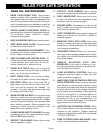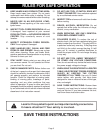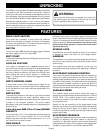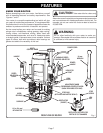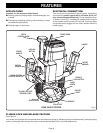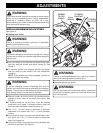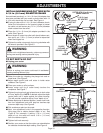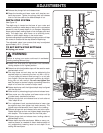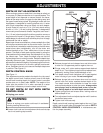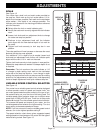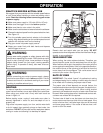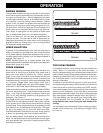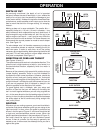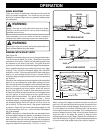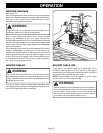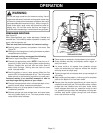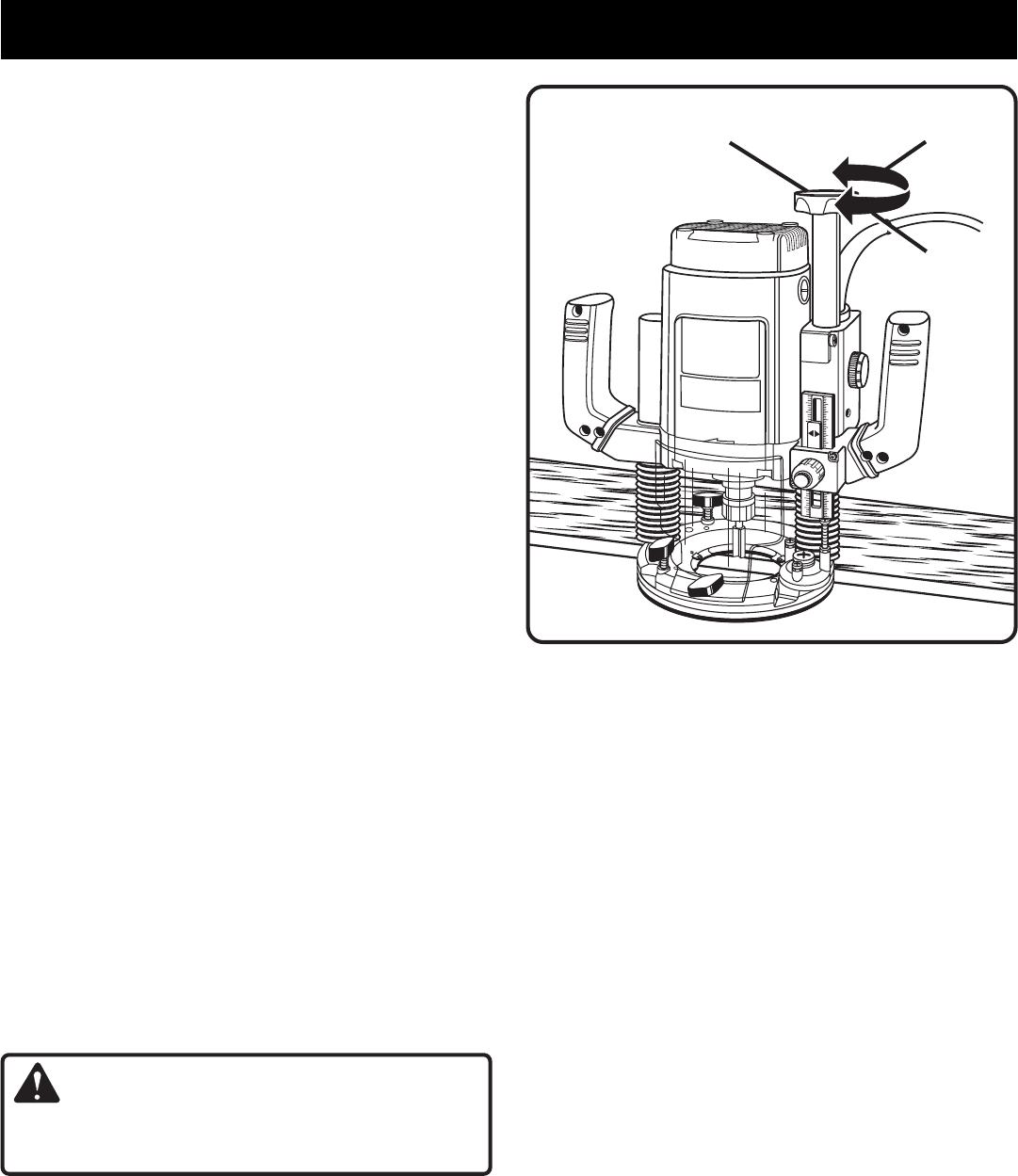
Page 12
ADJUSTMENTS
DEPTH OF CUT ADJUSTMENTS
When routing a groove or dado that is too deep to safely cut
in one pass, it is best to make the cut in several passes. The
proper depth of cut depends on several factors: the horse-
power of the router motor, the type of cutter being used, and
the type of wood being routed. A lightweight router with low
horsepower is designed for making shallow cuts. A router
with a high horsepower rating can safely cut much deeper.
A small router bit, such as a 1/4 in. (6.4 mm) shank veining
bit with a 1/16 in. (1.6 mm) cutting diameter, is designed to
remove only small amounts of wood. Large bits, such as a 1/
2 in. (13 mm) shank straight-flute bit are made to remove a
large amount of wood in a single pass. Router cuts can be
made deeper in soft woods, such as white pine, than in tough
hardwoods like oak or maple.
Based upon these considerations, choose a depth of cut that
will not place excessive strain on the router motor. If you find
that extra force is needed to make the pass or that the motor
speed slows down considerably, turn off the router and
reduce the depth of cut. Then, make the cut in two or more
passes. The depth of each pass can be preset by using the
three positions on the depth stop. Set the depth of cut, using
the lowest stop. Then, rotate the depth stop so that the
highest stop screw is under the scale. Rotate the depth stop
assembly after each pass. The screws on the stops can be
adjusted to the desired height by first loosening the lock nuts,
then turning the screws in or out with a phillips head screw-
driver. Retighten the lock nut to secure the depth stop screw
in position.
See Figure 10.
DEPTH CONTROL KNOB
See Figure 11.
Fine adjustments can be made to the depth of cut by use of
the depth control knob. Another primary use of the depth
control knob is setting depth of cut when router is mounted
upside down on a router table. NOTE: The weight of the
router plus the position it is in when mounted to a router
table make it necessary to use the depth control knob.
TO SET DEPTH OF CUT WITH DEPTH
CONTROL KNOB
■ Unplug your router.
WARNING:
Failure to unplug your router could result in accidental
starting causing serious injury.
■ Loosen lock knob and turn adjustment knob so that stop
bar is not touching stop screws.
■ Release plunge lock and release lever and allow router
to return to it's uppermost position against hex nut.
■ Plunge router until cutter reaches approximate desired
depth of cut. Then tighten plunge lock and release lever,
temporarily locking cutter at desired depth of cut.
■ Turn depth control knob clockwise until it seats against
motor housing of your router. Do not overtighten.
■ Release plunge lock and release lever and turn depth
control knob until cutter reaches desired depth of cut.
Turn depth control knob clockwise to lower the router
and counterclockwise to raise the router. Always make
sure plunge lock is released and router is free be-
fore setting depth of cut with depth control knob.
■ Tighten plunge lock and release lever, locking cutter at
desired depth of cut.
■ Turn adjustment knob and adjust stop bar until it touches
the desired stop screw.
■ Tighten lock knob securely.
Depth control knob is spring loaded against hex nut. If you
adjust it too far and it pops off threaded rod, refer to DEPTH
CONTROL KNOB ADJUSTMENTS in maintenance sec-
tion for proper assembly.
Fig. 11
DEPTH
CONTROL KNOB
TO
RAISE
TO
LOWER
in mm
1
2
3
9
3
1



